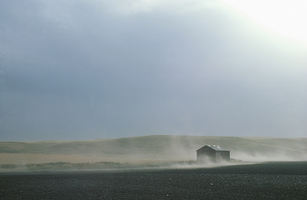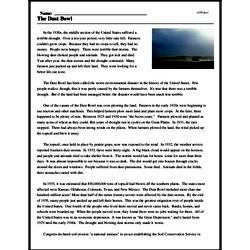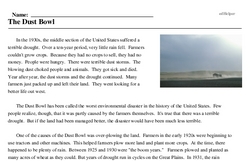The Dust Bowl
In the 1930s, the middle section of the United States suffered a terrible drought. Over a ten-year period, very little rain fell. Farmers couldn't grow crops. Because they had no crops to sell, they had no money. People were hungry. There were terrible dust storms. The blowing dust choked people and animals. They got sick and died. Year after year, the dust storms and the drought continued. Many farmers just packed up and left their land. They went looking for a better life out west.
The Dust Bowl has been called the worst environmental disaster in the history of the United States. Few people realize, though, that it was partly caused by the farmers themselves. It's true that there was a terrible drought. But if the land had been managed better, the disaster would have been much less terrible.
One of the causes of the Dust Bowl was over-plowing the land. Farmers in the early 1920s were beginning to use tractors and other machines. This helped farmers plow more land and plant more crops. At the time, there happened to be plenty of rain. Between 1925 and 1930 were "the boom years." Farmers plowed and planted as many acres of wheat as they could. But years of drought run in cycles on the Great Plains. In 1931, the rain stopped. There had always been strong winds on the plains. When farmers plowed the land, the wind picked up the topsoil and blew it away.




